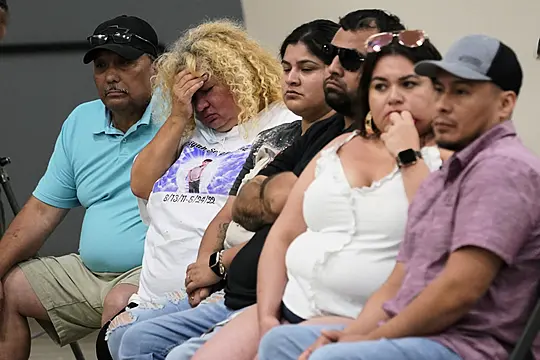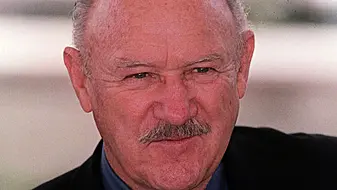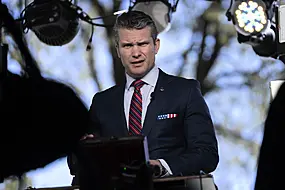A damning report and hours of body camera footage further laid bare the chaotic response to a mass shooting at a Texas primary school, where hundreds of law enforcement officers massed but then waited to confront a gunman even after a child trapped with the shooter called 911.
The findings of an investigative committee released on Sunday were the first to criticise both state and federal law enforcement, and not just local authorities in Uvalde, for the inaction by heavily armed officers as a gunman fired inside two adjoining fourth-grade classrooms at Robb Elementary School, killing 19 students and two teachers.
Footage from city police officers’ body cameras made public hours later only further emphasised the failures — and fuelled the anger and frustration of relatives of the victims.

“It’s disgusting. Disgusting,” said Michael Brown, whose nine-year-old son was in the school’s cafeteria on the day of the shooting and survived. “They’re cowards.”
Nearly 400 law enforcement officials rushed to the school, but “egregiously poor decision-making” resulted in more than an hour of chaos before the gunman was finally confronted and killed, according to the report written by an investigative committee from the Texas House of Representatives.
Together, the report and more than three hours of newly released body camera footage from the May 24 tragedy amounted to the fullest account to date of one of the worst school shootings in US history.
“At Robb Elementary, law enforcement responders failed to adhere to their active shooter training, and they failed to prioritise saving innocent lives over their own safety,” the report said.
The gunman fired approximately 142 rounds inside the building — and it is “almost certain” that at least 100 shots came before any officer entered, according to the report, which laid out numerous failures.

These failures included:
— No-one assuming command despite scores of officers being on the scene.
— The commander of a Border Patrol tactical team waiting for a bulletproof shield and working master key for the classroom, which may have not even have been needed, before entering the room.
— An Uvalde Police Department officer saying that he heard about 911 calls that had come from inside the classroom, and that his understanding was that the officers on one side of the building knew there were victims trapped inside. Still, no-one tried to breach the classroom.
The committee did not “receive medical evidence” to show that police storming the classroom sooner would have saved lives, but it concluded that “it is plausible that some victims could have survived if they had not had to wait 73 additional minutes for rescue”.

The findings had at least one immediate effect, with Lieutenant Mariano Pargas, an Uvalde Police Department officer who was the city’s acting police chief during the massacre, placed on administrative leave.
Uvalde mayor Don McLaughlin said an investigation would be launched to determine whether Mr Pargas should have taken command of the scene.
He also disclosed for the first time that some officers had left the force since the shooting but did not provide an exact number, saying it was up to three.
Hours after the report was released, Uvalde officials separately made public for the first time hours of body camera footage from the city’s police officers who responded to the attack.
Calls for police accountability have grown in Uvalde since the shooting.

“It’s a joke. They’re a joke. They’ve got no business wearing a badge. None of them do,” Vincent Salazar, grandfather of 11-year-old Layla Salazar, who was among those killed, said on Sunday.
According to the report, 376 law enforcement officers massed at the school. The overwhelming majority of those who responded were federal and state law enforcement. This included nearly 150 US Border Patrol agents and 91 state police officials.
“Other than the attacker, the committee did not find any ‘villains’ in the course of its investigation,” the report said.
“There is no-one to whom we can attribute malice or ill motives. Instead, we found systemic failures and egregiously poor decision-making.”
The report noted that many of the hundreds of law enforcement responders who rushed to the school were better trained and equipped than the school district police — which the head of the Texas Department of Public Safety, the state police force, previously faulted for not going into the room sooner.
Investigators said it was not their job to determine whether officers should be held accountable, saying that decisions rested with each law enforcement agency.







